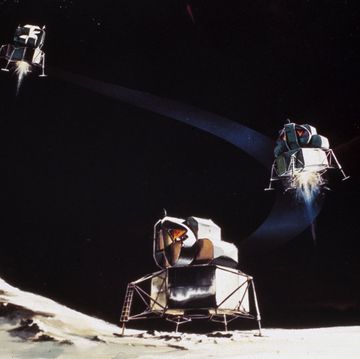How feasible is the Mars One plan?
Currently, it's not. One of the biggest claims made by the Mars One team is that absolutely no new technology needs to be developed for the success of their mission, which is setting up a colony on Mars. We found that there are several cases for systems like the environmental control and life support where that's just not true.
Even if some of these technologies did exist, we discovered that over time, the Mars One mission would become exceedingly expensive and unsustainable. That's because the mission's plan relies on a steady resupply stream bringing replacements like filters, pumps, motors for when something inevitably breaks. As the colony expands, you find that the sheer mass of the spare parts you're transporting explodes and becomes a bigger and bigger part of what you send to Mars each time you launch.
And you need all of these spare parts. Unlike the International Space Station, you can't have your crew eject (and be back on the ground in a few hours) if something critical is damaged.
We didn't even analyze a couple of vital elements of the mission—like the communication, power, and landing systems—which are likely to also require new technological advancements.
Your study revealed Mars One's life support setup would actually produce dangerous levels of oxygen. What's up with that?
Creating a breathable atmosphere on Mars is probably one of the easier problems to solve. But the issue we found in our study is that to fulfill the caloric requirements of the colonists, the Mars One team needs to grow at least four times the amount of plants they had planned. Growing this amount of crops in the same [area where the crew lives and works] would result in excessive levels of oxygen that would pose a fire risk.
Now, there are a couple of ways you might get around this issue. For example, on Earth, we have technologies that selectively remove oxygen from an atmosphere. These have never been used in spaceflight applications. Or, you could plan to separate where your colonists live from where you grow your food. But what was really surprising is that, as far as we could find, this entire issue of needing to remove oxygen has never been mentioned in any of the Mars One plans.
You also argue that the mission's cost is severely underestimated.
A lot of this goes back to the spare parts and resupply issue. By the launch of the fifth crew, spare parts alone would make up 62 percent of your entire resupply requirement.
Although Mars One claims that conducting a one-way mission is cheaper than conducting a return mission (which sounds right, because you don't need to send your return vehicle with you), this is really far from the truth. Over time, these lifecycle costs offset any savings you'd have in the first place.
Another problem is that much of the Mars One plan—and this is based on unofficial sources and the size of the equipment they plan to bring—is focused on utilizing a five-meter diameter variant of the SpaceX Dragon capsule. But SpaceX's current Dragon capsule is only three and a half meters in diameter, and there's never been any type of announcement that SpaceX plans to build a scaled-up version. For the sake of our study, we were generous and just assumed that we could use a hypothetical five-meter diameter variant, but a smaller capsule would require more rockets.
How did the Mars One plan get so unrealistic?
Thats a tough question. It looks a lot like, across the board, the Mars One team seemed to use the most optimistic numbers possible. They've also done a lot of 1-to-1 mapping of their specific mission needs to currently available technologies, and that leads to unrealistic expectations.
When you start to integrate multiple technologies into a single system, you get emergent behaviors that are difficult to predict. Many of these technologies may work on Earth, but there's no guarantee we wouldn't find issues in the Mars environment, and that could be a deadly mistake.
Something related, which was somewhat unexpected, is how the Mars One team has responded to our study. We made a lot of a lot of design recommendations, and kind of expected they'd be welcoming of suggestions to help develop a roadmap to feasibility. But instead there's been a lot of defensiveness and ad homonym attacks.
So should Mars be off the table for now?
I want to be clear: We are not saying we should not go to Mars. In fact, the entire reason we did this study was to adjust the aims and preparation of a Mars manned mission.
But every manned space mission in history has been done through incremental steps, to minimize the risks of which there are many, and to uncover the unknown unknowns that come with any new territory. Planning a one-way mission before we've quantified the risks, and before we've recognized the challenges — that's just not an incremental step.
If we look at the tragedies of manned spaceflight — like the Apollo 1 fire, or Columbia and Challenger accidents — there's a great danger in getting complacent about your ability to keep humans alive in space. So this idea, that everything is easy because it's been done before, that's an incredibly dangerous mindset when planning a Mars mission.















